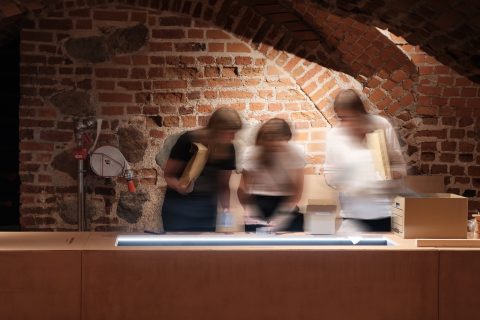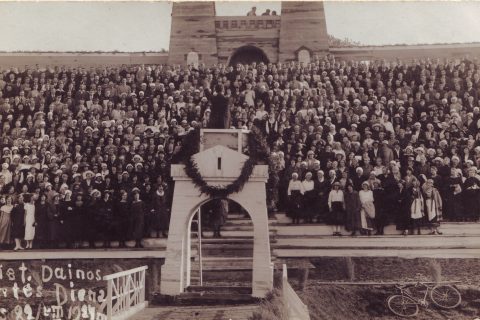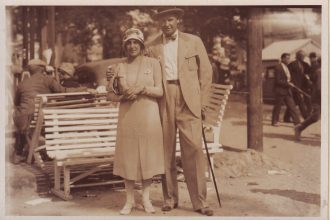The year was 2022. While watching Back to the Future, I regretted that we still don’t have a time traveling DeLorean. I imagine that, like most Kaunas residents, I would choose the interwar period Kaunas as the first stop in my time travel. I would take a walk around the growing, buzzing city and see with my own eyes how the Christ’s Resurrection Church is being built, the network of streets in Žaliakalnis is woven and how the February 16 is celebrated.
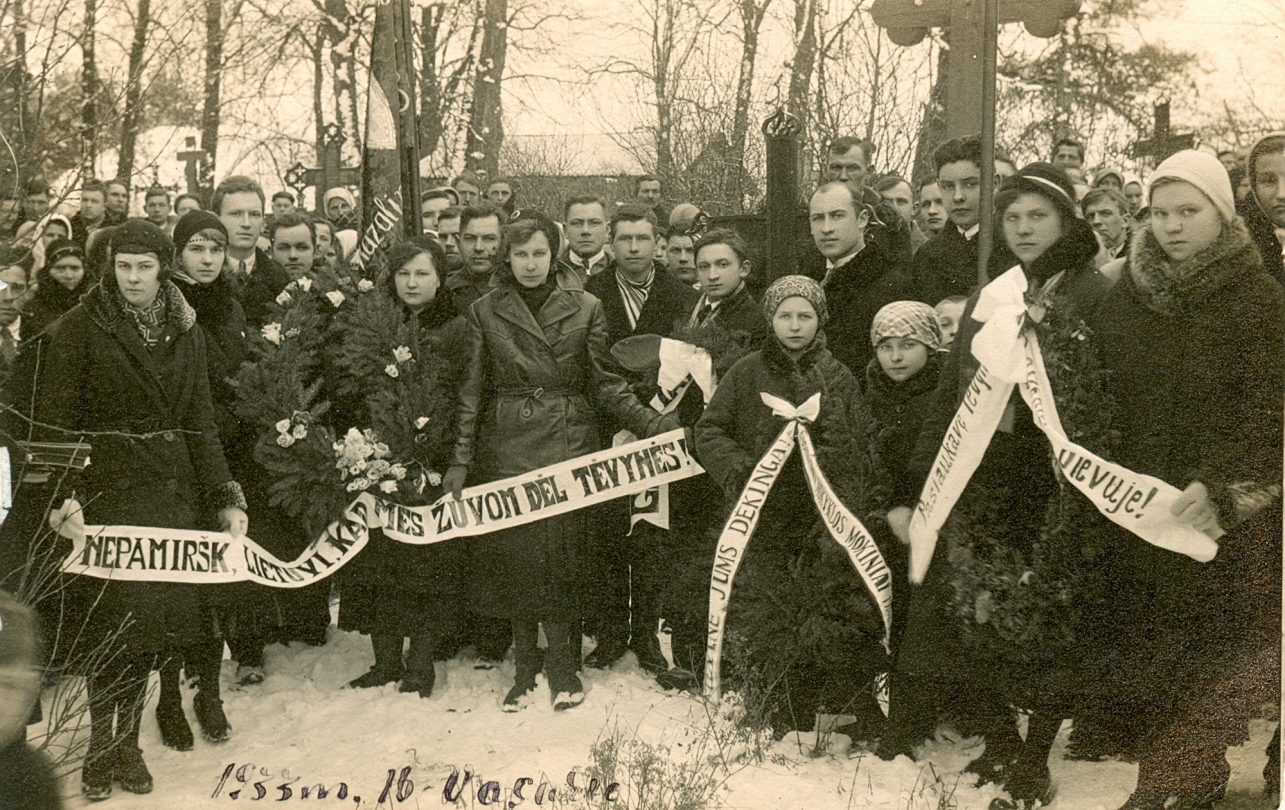
And yet you don’t really need to time travel to go back to the past. One of the ways is to visit the webpage of the project – 100 Years Ago – organized by Kaunas City Museum. In it, every day you will find a new post from the interwar period press that was published that same day exactly 100 years ago. We will be able to turn the pages of the interwar period Lithuanian calendar throughout the year 1922. We talked to the head of the Kaunas history department of the Kaunas City Museum and the project coordinator dr. Inga Puidokienė about what we shall find in it.
The 100 Years Ago project initiated and curated by Kaunas City Museum has been operating for several years. Tell us how this idea was born.
I had to pause and think a bit: have we really been working on it for so long? It seems that we only started last year… Kaunas City Museum has been implementing the 100 Years Ago project since January 1, 2019, and we consider 2018 as the year of its birth, when Lithuania celebrated its centenary. 100 Years Ago, is a continuation of the LT1918 project, which was implemented in 2018 by LT Centuria with partners, including Kaunas City Museum. The project focused on the year 1918, with no plans to continue it. However, seeing the need in society, it was decided to continue with the project. In 2019, commemorating the year of the temporary capital, Kaunas City Museum took over the further implementation of the project, expanding the chronological boundaries, but leaving Kaunas as the main object of research. On that occasion, the project was renamed 100 Years Ago.
The main goal of the project is to present the development of Kaunas city, covering political, cultural and economic life in 1919–1940, when our city was the temporary capital and held the status of the most important city in Lithuania. Although we mostly focus on Kaunas when choosing the historical information, we do not avoid topics through which it is seen in the country, European or world context. In order to reveal the geopolitical situation of that time, the development of culture and technology, we also include world news.
On the initiative of the world, Kaunas became the capital of Lithuania for a while, even if the Lithuanians themselves did not want to come to terms with it and “calm down without Vilnius.”
I imagine that the preparation of this ongoing project requires a lot of time and effort. You have to select the material, illustrations, and present it all in an attractive manner to the reader. And although the flow of information a century ago was incomparably lower than it is today, we have rather many interwar period sources to choose from. How do you choose which message to publish?
The project indeed requires a lot of effort. Some days’ posts consist of just several sentences but even they take time to prepare. For a post to appear we need to assess a specific day that happened a hundred years ago. We start by considering what happened that day, maybe an important event (maybe an institution was established, an important meeting or a community, society gathering, or a congress took place; a play premiered, a concert took place, or an important person visited Kaunas, etc.) There are days when nothing special seems to have happened, but life did not come to a halt either. After all, people’s daily lives do not only consist of those events that are important from the position of today’s historian. So, we begin our search. We look through the specific day’s periodical press and collections of various manuscripts, documents, letters, diaries, photographs and other exhibits stored in the Kaunas City Museum. We hope to find the day we need. After we find the message that we want to publish, we transcribe it and start looking for a suitable illustration because – it must be noted that – a post without an interesting image does not reach as many readers.
Of course, we try our best to cover as wide a range of topics as possible so that everyone can discover the most interesting information for them. Some find cultural life interesting, and others are interested in social and political life. And I am not talking only about the people who follow our project but also about the team that works on the project. It consists of six people, who perform journalistic tasks, so it is only natural that the messages are different. Even when reading the same periodical or other source of information, people will usually see different things. Let’s say one of us is more interested in the life of ethnic or religious communities, so while looking through the press, they will notice this information first. Another is interested in social issues and will not miss a message about crimes, charity or other. Yet another may be into environmental issues, or politics, culture. Therefore the messages are so diverse in content.
What is the main goal of this big project? What made this an attractive way to talk about history?
We live in a time when one of the main channels for receiving information is social networks. Short and informative posts shared on social media reach the most people. Readers want to get information, but they do not want to read long texts. The visual aspect definitely influences the reach. Therefore, we try to use as interesting – previously unpublished or little-published (with some exceptions) – illustrations as possible.
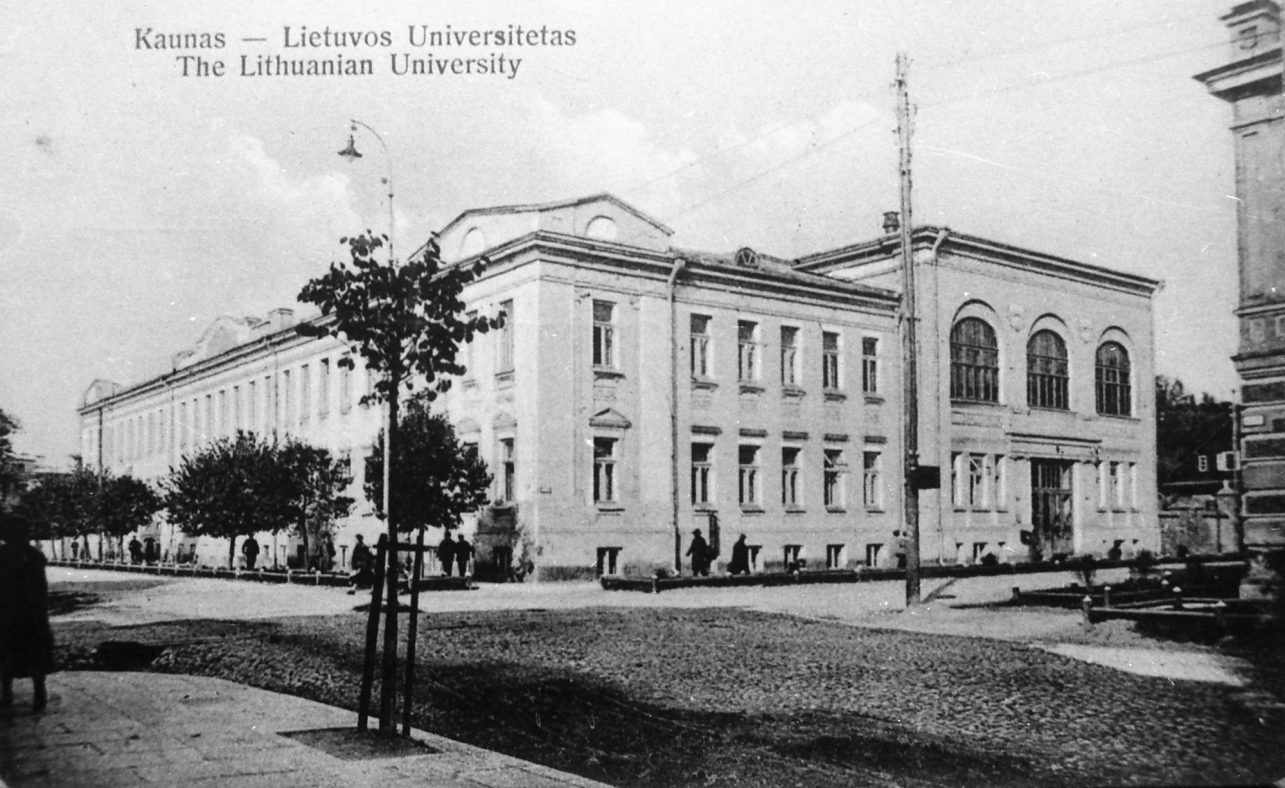
Museums, adapting to the changing needs of visitors, are also looking for new forms to present the cultural valuables they have accumulated, as exhibitions alone are not enough for the modern consumer of culture. We have a rich fond of Kaunas history at the Kaunas City Museum. It contains various artifacts reflecting the life of the city (photos, documents, prints, objects, etc.). We really pay a lot of attention to the Kaunas’ past, and this project is no exception. By using attractive visual content, we encourage not only Kaunas residents, but also a wider audience to be more interested in the history of our city and historical sources (museum exhibits, periodicals, archival documents). Of course, in this way we raise national and civic awareness as well as love for the city.
The first post of the 100 Years Ago project was made on April 15, 1919. Was this day chosen on purpose?
It is sad that the posts on the project’s webpage start only form this date. This is due to the technical limitations of the page. In fact, the first post should be dated as January 2, 1919. This date was not chosen at random. I have already mentioned that we started the project as one of the activities to mark the year of the temporary capital. So, the date was not accidental. This was the day when the provisional government of Lithuania left Vilnius with the last German military train going to Kaunas. The year 1919 marked the beginning of changes in Kaunas. So, we started the project from the date our city de facto became the temporary capital. With selected authentic pieces of text, we allow our followers to feel the challenging transformation of the peripheral city into a modern capital. The city’s administrative institutions as well as ministries started to concentrate here. Kaunas was supposed to become a political, social, economic and cultural centre. That is why various state institutions, foreign embassies were settling in Kaunas along with banks and the largest industrial and commercial enterprises. The administrative boundaries of the city expanded, and Kaunas turned from a military fortress and the centre of the periphery into a modern city.
It is interesting to examine what kind of view of Lithuania of 1922 emerges through the selected authentic sources of the time. What kind of Lithuania will we see in the project this year? Can we find parallels with Lithuania in 2022?
The year 1922 was rather significant in the life of Kaunas and Lithuania but when preparing the posts, we will try to find the parallels with the year 2022. It is only unfortunate that Lithuania started this year with a rather polarized worldview; the public sphere is full of various tensions. Comparing these days with what happened over a hundred years ago, it seems that little has changed. The Lithuanian press of 1922 was full of polarized opinions and heated disputes. After all, many important events were taking place: the Constitution was adopted, the national currency introduced, and a university established. Without these attributes, the modern Lithuanian state would have been incomplete. Just as significant was the law on land reform, which caused enormous tensions and confrontation in society, but became the last point in the transition from a class society to a modern republic in which all the citizens had equal rights. This was to be ensured by the Constitution, and the further harmonious development of society and the development of Western values were to be enabled by the said university. Thus, Lithuania developed and changed at a great pace. But the side effects of all this development have, of course, been active political quarrels or even tensions over national, social and linguistic issues.
What else was considered important news in the interwar period Lithuania? What kind of news received most attention?
In addition to the events already mentioned, much attention in 1922 was paid to the issues of ethnic and religious minorities. Indeed, the young state needed to put a lot of effort into ensuring the proper life of ethnic and religious minorities and its relationship with them. After the First World War, the League of Nations decided to review and control the minority rights. To this end, appropriate agreements were concluded with various countries. In order to be admitted to the League of Nations, Lithuania also had to sign a commitment to protect ethnic minorities. This was done in Geneva on May 12, 1922, when Vaclovas Sidzikauskas signed the Declaration of the Rights of Ethnic Minorities at the League of Nations Secretariat. This guaranteed the freedom of national, religious and cultural expression. This was a particularly important step for the multi-ethnic Lithuania at that time. This will definitely be reflected in our posts.
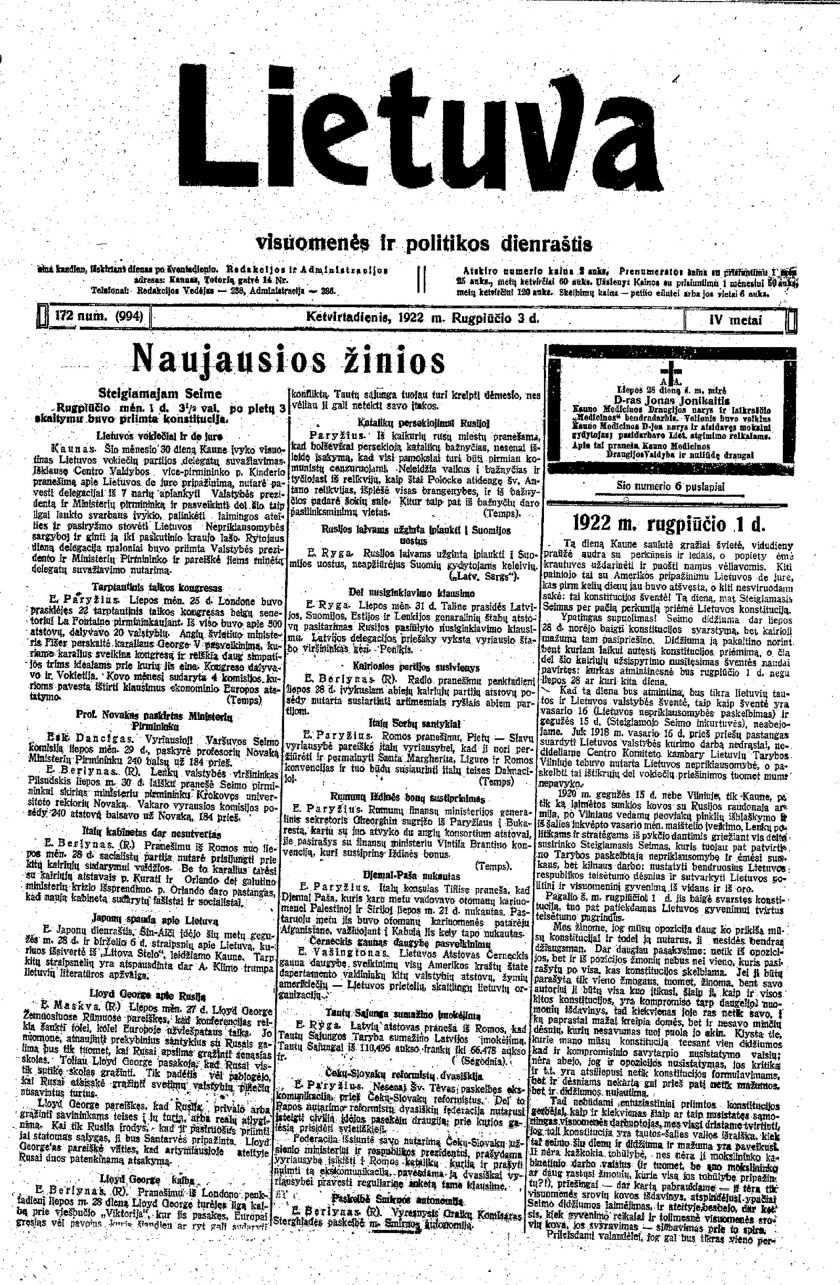
In February, we will write about the commemoration of the main national holiday. The tradition of celebrating the anniversary of the country’s independence in the temporary capital was already established in 1922. We can see from the festive February 16 program that it contains all the main elements: service held in the most important churches in Kaunas, army parades, marches of public organizations, solemn meetings of the Seimas, premieres of theatre plays an opera performances, events honoring those who died for Lithuanian freedom. Such a festive program did not change substantially in the following years. Of course, the first celebrations were the most solemn, with the efforts of both the government and the public. Later, the jubilee celebrations of the independence received more attention.
Undoubtedly, we will devote a lot of space to various everyday issues, which at that time were very relevant for Kaunas residents and other Lithuanians. For example, healthcare issues, crime, education. As in previous years, we will focus on culture.
The 1922 are gaining momentum in the project. One of the first posts on January 5 says that people need to get used to calling (and writing) Kaunas as soon as possible, and to return the letters to everyone, who wrote Kovna or Kown on their envelope. Meanwhile, Kaunas of 2022 is already a European city, striving to establish itself as a contemporary capital of art and culture. Can you mention more ways in which the young Lithuanian state and its new capital tried to become recognized and known?
The debate on the use of the Lithuanian language has been going on since 1919, but from the press reports or the transcripts of the Seimas we can see that the issues of the use of the Lithuanian language were also relevant in 1922, especially during the drafting of the Constitution. The relevance of the problem is also shown by the discussions on the correct spelling of Kaunas. Of course, this also expresses the desire for the city to be recognized and known. As we mentioned, a newly established university and the signed declaration of national and religious minorities also contributed to this. The year 1922 was significant to Kaunas because it was getting more and more used to being the capital as evidenced by the increasing number of visits by various diplomats and the establishment of embassies and consulates.
It is no coincidence that this year was the year when Lithuania was finally de jure recognized by the world community, although the historical capital remained outside this recognized territory. On the initiative of the world, Kaunas became the capital of Lithuania for a while, even if the Lithuanians themselves did not want to come to terms with it and “calm down without Vilnius.”
Kaunas held the position of the temporary capital with honor. A century later, the entire cultural community of Kaunas hopes that we will be able to hold the position of the European Capital of Culture just as honorably this year.

